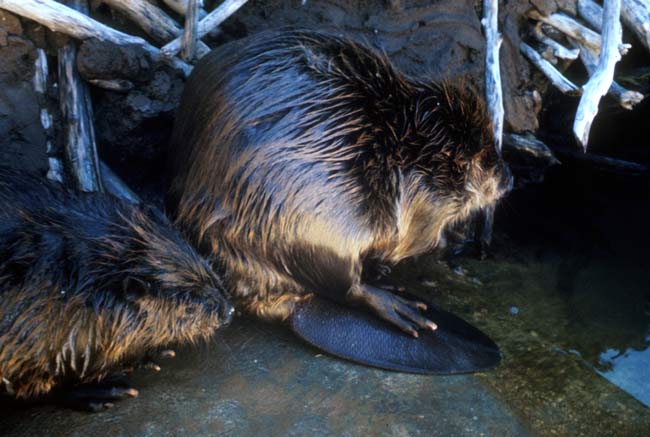Beavers Could Be Frogs Best Friends

Beavers' stream-clogging ways may be pesky to humans, but their dams might be just what some frogs and toads need to survive in their dwindling wetland habitats, a new study concludes.
Cam Stevens of the University of Alberta and his colleagues conducted a survey of the calls of male frogs and toads around streams in parts of the boreal or conifer forests in west-central Alberta, Canada, and found that they only heard their choruses near streams where beaver dams were present.
The scientists? expected to find at least some amphibians near other streams, but "the effect was overwhelming," Stevens told LiveScience.
The researchers also caught three species of frogs and toads and found anywhere from five to 29 times as many young, newly-developed amphibians near streams with beaver dams as near free-flowing streams.
The beavers act as a "surrogate species" that serves as a protective "umbrella" to several species that live in the same habitats, Stevens wrote in the study published in the current issue of the journal Biological Conservation.
Such an umbrella is important because amphibian populations all over the world are declining. The culprits include habitat loss, disease, climate change, and combinations of all these factors.
In Canada's boreal or conifer forests, "there's some evidence to suggest it's habitat loss," Stevens said. Both habitat loss and climate change reduce the number of smaller ponds that amphibians use as breeding grounds.
Get the world’s most fascinating discoveries delivered straight to your inbox.
"These types of ponds are disappearing," Stevens said.
Warm bathtubs
So why is it that frogs are so attracted to beaver dams? By damming up the streams, the beavers are "creating an environment for the tadpoles to grow and develop in," Stevens explained.
The beaver dams create warm bathtubs of oxygen-rich standing water ideal for tadpoles.
"Otherwise these tadpoles and larvae would be washed downstream," Stevens said.
Because the water is warm and still, algae, a favorite food source for tadpoles, can grow more abundantly. The dams also keep predatory fish from swimming upstream and eating the tadpoles.
All these conditions are necessary to the survival of the developing tadpoles, Stevens said.
Boon or nuisance?
While frogs find beavers to be helpful neighbors, beaver dams can be a nuisance to humans because beavers like to build them in culverts and that can cause water to back up and flood roads. In such cases, beavers are often killed or moved to other areas.
Beavers also fell trees that the forest industry would prefer remained standing.
"So beavers are a pest in a lot of situations," Stevens said.
The challenge, he said, is to find places where conflict with humans can be minimized while also allowing beavers to build their dams and provide shelter for developing amphibians. Many forestry companies will likely be helpful with such a plan, he added, because they are interested in contributing to amphibian conservation.
Original article on Live Science.

Andrea Thompson is an associate editor at Scientific American, where she covers sustainability, energy and the environment. Prior to that, she was a senior writer covering climate science at Climate Central and a reporter and editor at Live Science, where she primarily covered Earth science and the environment. She holds a graduate degree in science health and environmental reporting from New York University, as well as a bachelor of science and and masters of science in atmospheric chemistry from the Georgia Institute of Technology.


